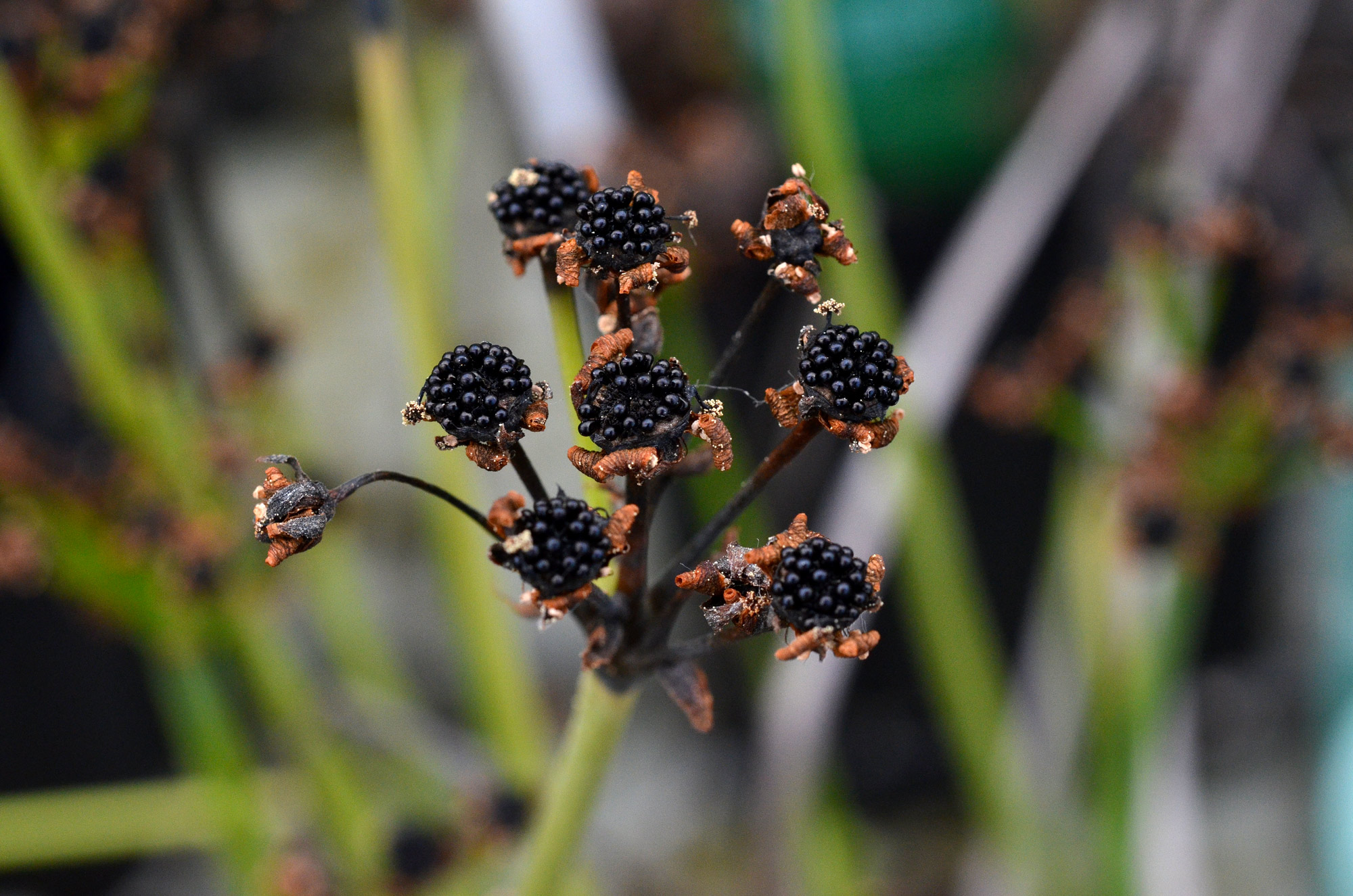Author: Giuseppe Milanato Photo: Luca Parolin
Reading Time: 5 min
Dionaea Muscipula “Made in Diflora”
The Dionaea muscipula, more commonly known as the Venus flytrap, is one of the most iconic and beloved carnivorous plants—and one of our favorites here at Diflora. It’s not only the first species we ever hybridized, but it also provides an incredibly stimulating field for research. Though it’s a single species, it boasts numerous distinct visual forms, or phenotypes, which consistently allows us to produce plants with surprising characteristics. In this article, we’ll take a deep dive into the technical specifics of hybridization and cultivation, giving you a glimpse into the very heart of our work.
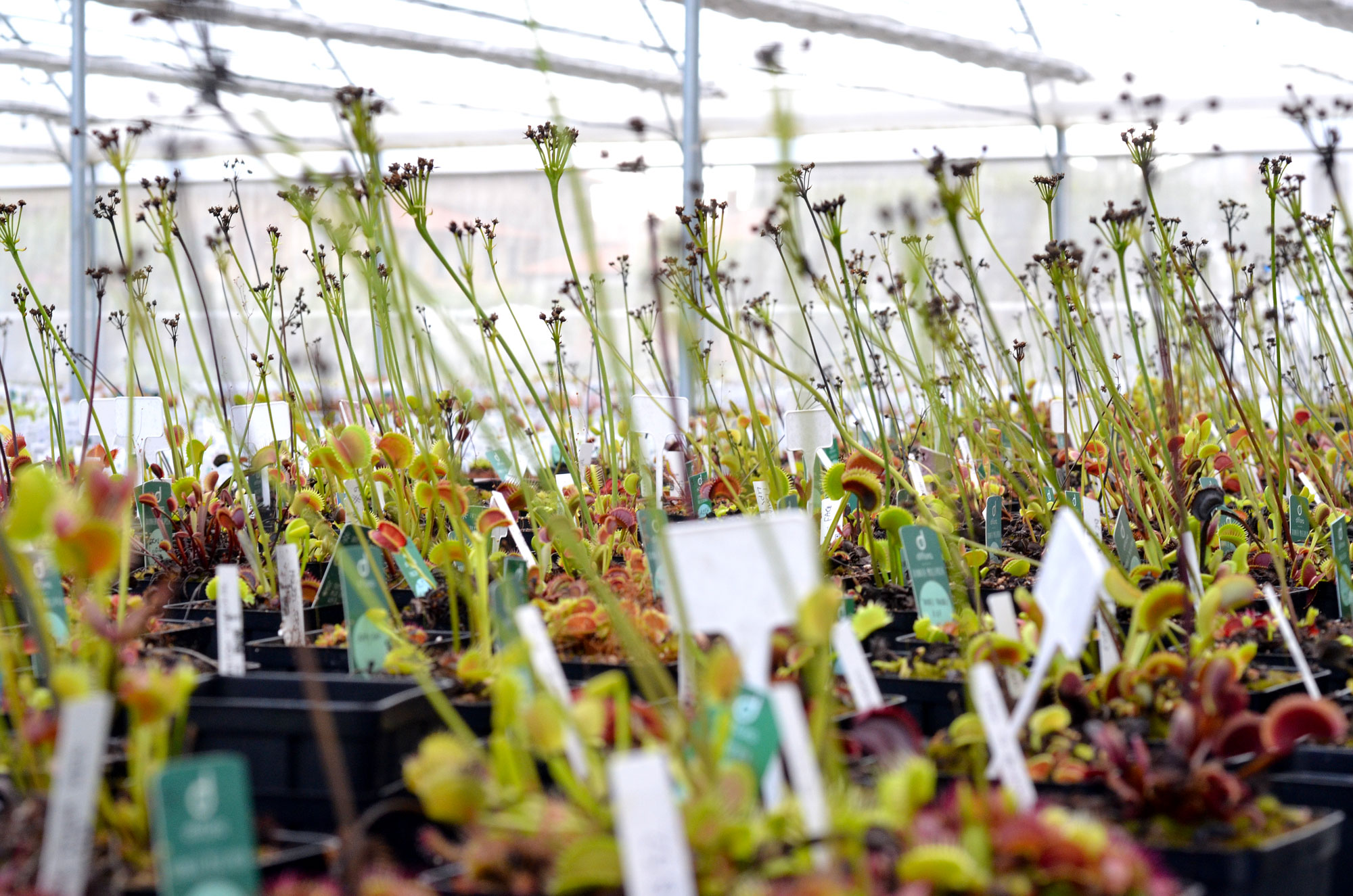
Why is Dionaea muscipula an ideal plant for hybridization and in vitro propagation?
Dionaea muscipula has several qualities that make it an exceptional candidate for creating new hybrids:
- Frequency of spontaneous mutations: There are already numerous natural genetic mutations in Dionaea muscipula, which signals its predisposition to DNA changes. This intrinsic trait paves the way for new combinations.
- Abundant flowering and easy pollination: Dionaea produces a large number of flowers, and the process of manual pollination is relatively straightforward. This operational ease is a significant advantage when creating new crosses.
- The benefits of in vitro propagation: Initially, the in vitro technique was primarily used for the mass propagation of existing plants through tissue culture. Over time, we’ve come to understand its potential to accelerate the growth process from seed and the subsequent cloning, significantly speeding up the selection process.
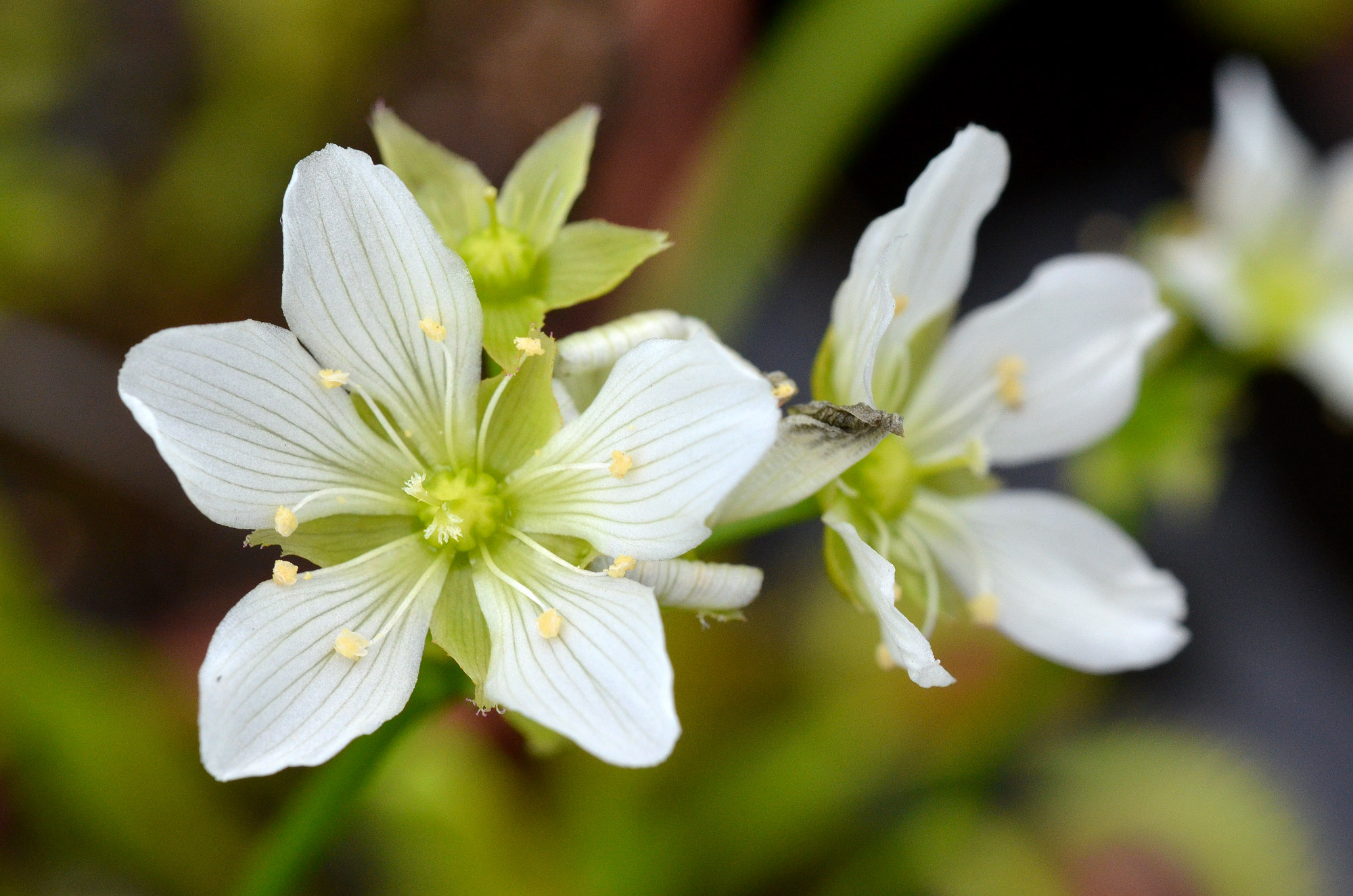
From zygote to test tube
The journey of a new Dionaea variety begins with manual pollination. We carefully select the parent plants, often performing crosses in both directions (one plant as the mother and the other as the father, and vice versa) to maximize the chances of success and to later select the most fertile offspring.
Generally, we prefer to use the plant with the desired phenotype as the mother to minimize the risk of contamination from male pollen, both from the plant itself (as it is monoecious) and from “external” sources.
Pollen is deposited on the flower’s stigma, where it germinates and forms a pollen tube. This tube then travels, guided by chemical signals (protein molecules), through the tissues until it reaches the ovary. Once it arrives at the ovule, it fuses, creating a zygote.
The zygote, which is diploid (containing the full chromosomal set from both “mother” and “father”), transforms into an embryo. It accumulates starch and other reserve substances, then matures and enters dormancy inside its outer layers, or “shells,” initiating a process of dehydration and forming a seed. This is essentially a dormant “capsule” containing cotyledons (two primary leaves) and essential nutrients.
From the “fruit”—the swollen ovary—the resulting seeds are collected and subjected to a rigorous process of sterilization, cold stratification, and in vitro propagation, which we detailed [HERE] in our previous article.
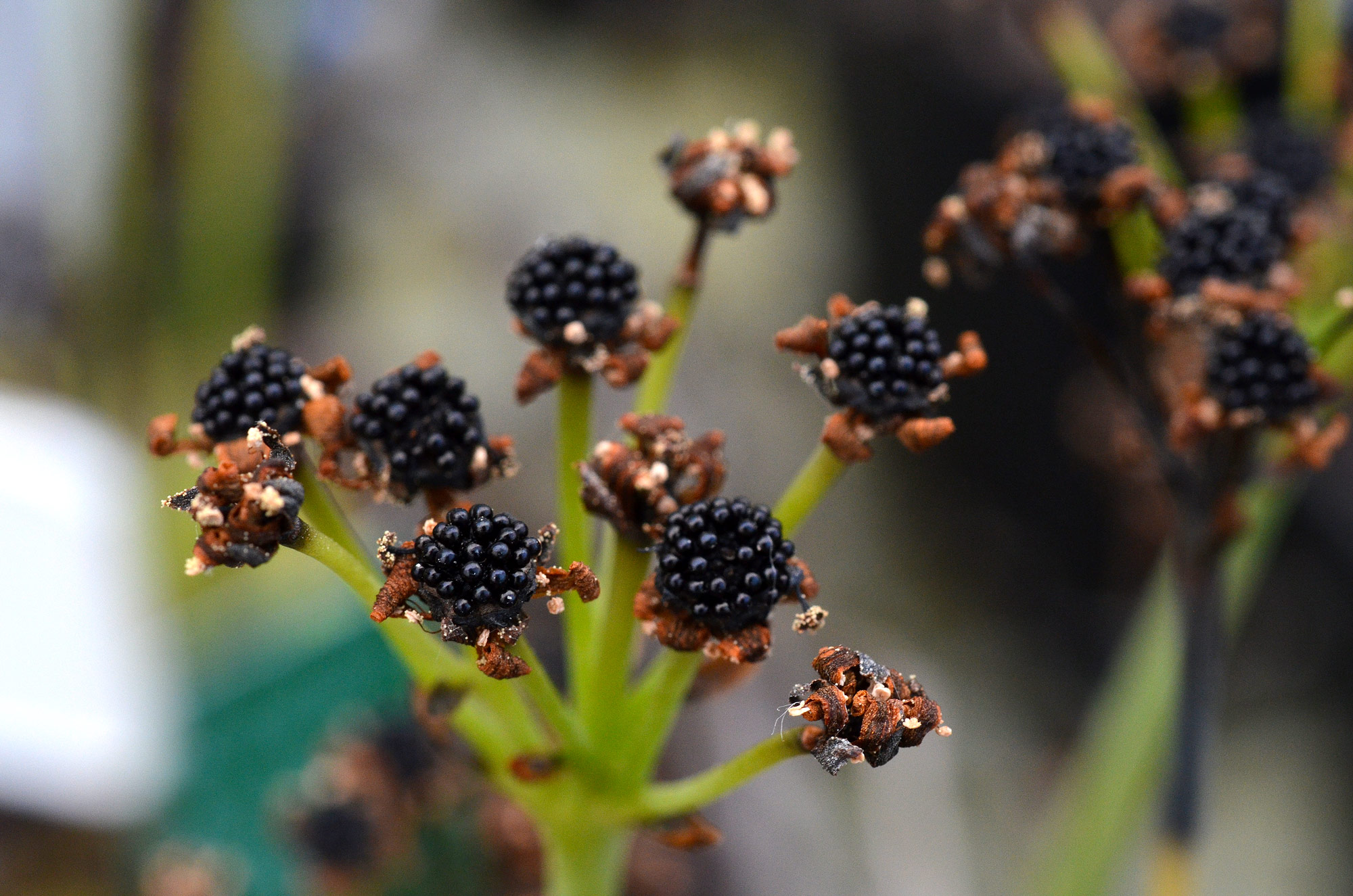
Once the main plant’s rhizome is large enough, it is transferred to a medium enriched with cytokinins, hormones that stimulate growth and the formation of new plantlets from meristematic cells in the axillary buds—in other words, identical clones. The in vitro propagation process generates an exponential number of new plants that are theoretically identical.
The in vitro propagation of Dionaea muscipula in our labs is nothing more than an “accelerated” rhizome division. That is, the number of plants produced (thanks to the use of hormones and the presence of sugar in the medium) is greater than what would normally happen in a typical pot!
However, it is a very stable process: it involves the generation of new growth points from the rhizome and from cells that are already partially “meristematic” (i.e., predisposed to give rise to new plants). Traditional propagation methods, such as leaf or flower stalk cuttings, are far more stressful for the plant. Following a “cut” or “break” in the tissues, the plant triggers a response that stimulates some somatic cells to regress and become meristematic. This complex process has a much higher probability of generating mutations than propagation by rhizome division!
N.B.: In the near future, we’ll be sharing some fascinating test results, conducted in collaboration with the University of Padua, that have highlighted these findings!
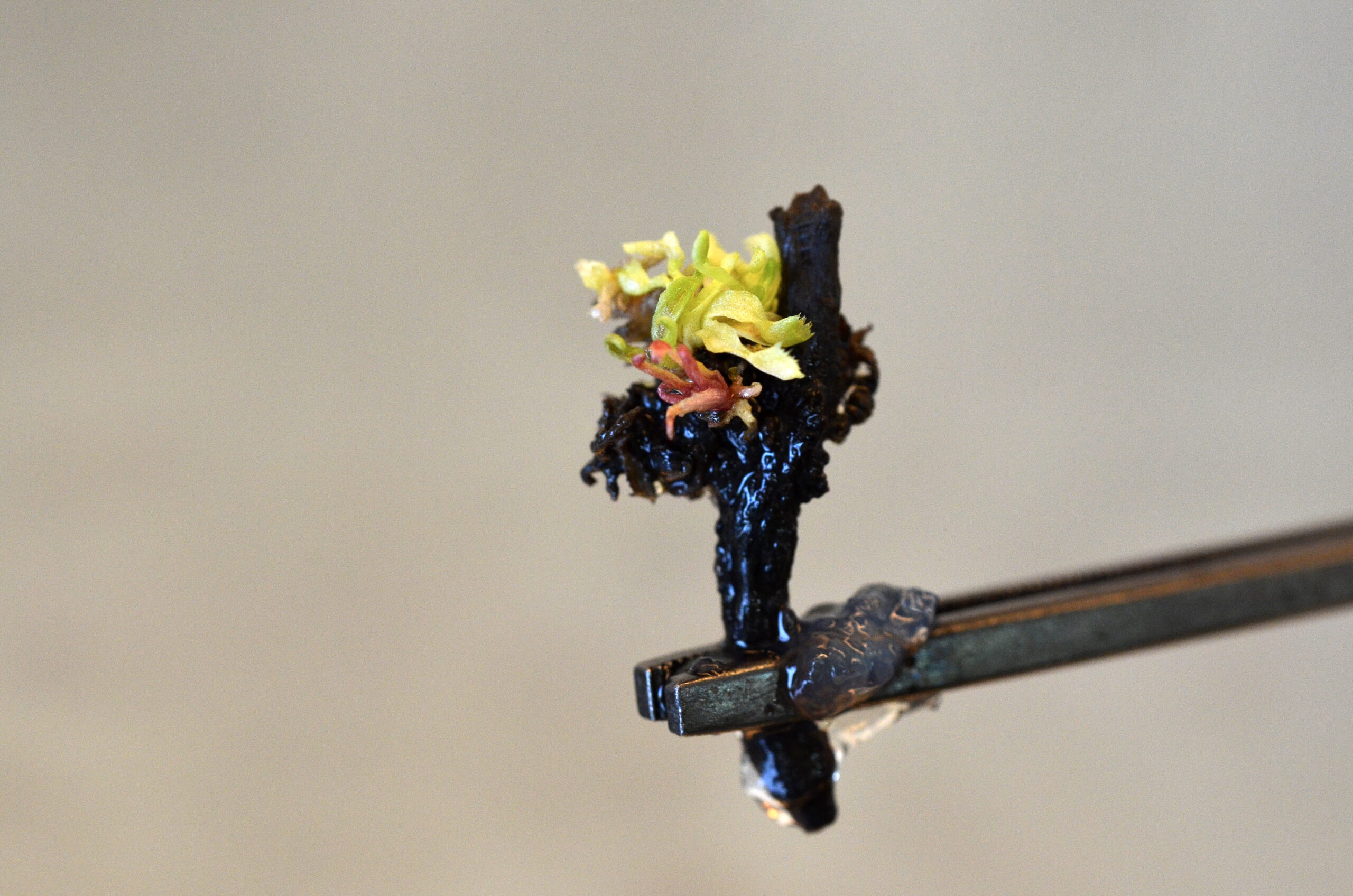
So, where does the difference lie? It’s all in the numbers!
While traditional methods can generate no more than 3-4 plantlets per leaf/stalk, in vitro propagation can produce thousands of plants from a small explant! Therefore, the greater probability of obtaining mutations is with more common methods (like cuttings). However, there is a widespread belief that in vitro propagation itself inherently causes “a priori” mutations or even “special” mutations, specifically because it’s a lab-based propagation method. This isn’t true. This belief is, in most cases, unfounded (with the exception of those who intentionally use chemical or physical mutagens, which we do not do). Simply put, due to the enormous numbers produced, we DO indeed bring a greater number of mutated plants to light through in vitro propagation, but NOT with a higher frequency compared to traditional techniques.
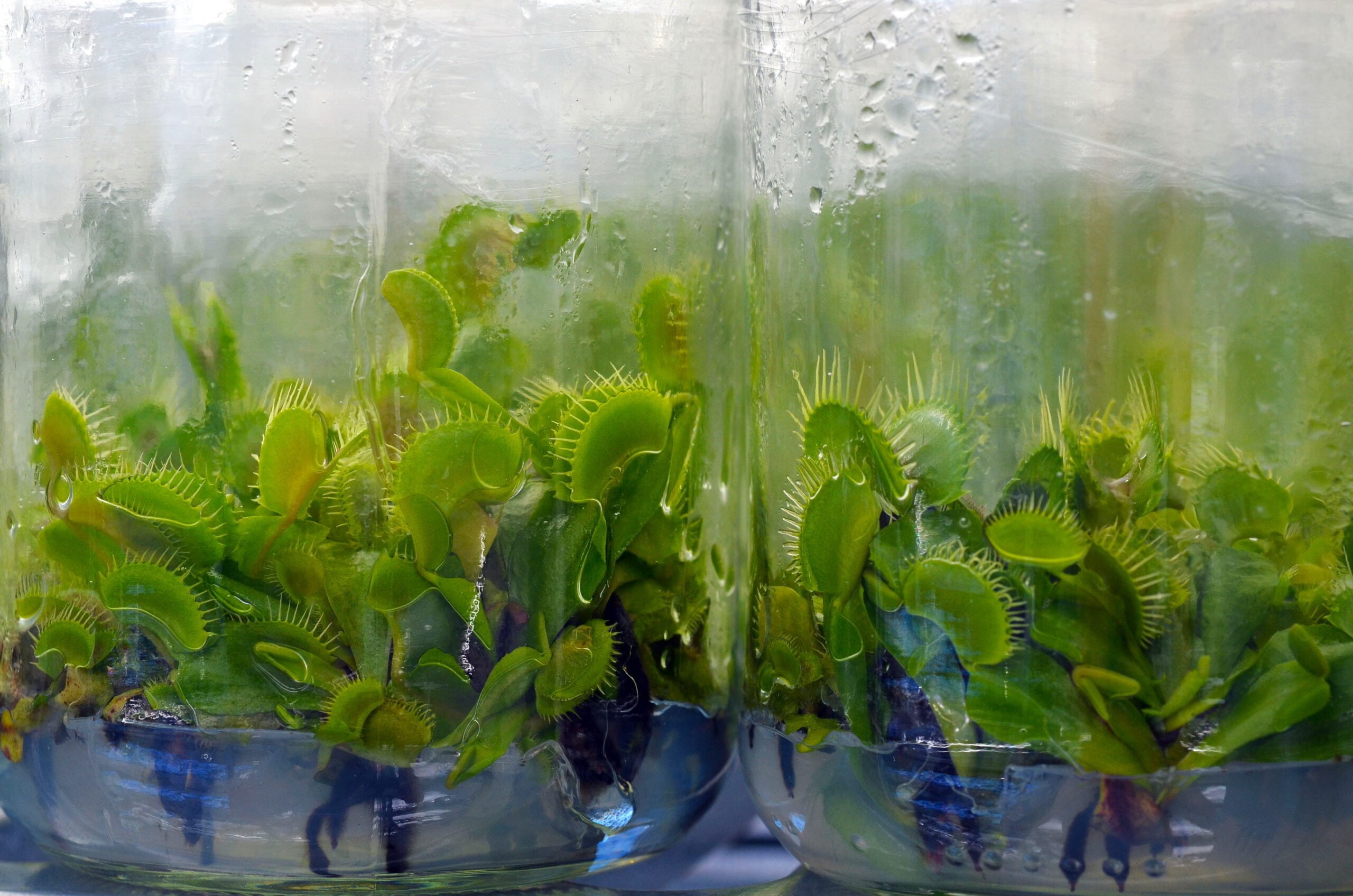
From the lab to the great outdoors
At the end of the replication process comes one of the most delicate phases: the acclimatization of the plantlets. By “acclimatization,” we mean their transfer from the controlled environment of the laboratory to the outside world, where they must face the challenges of real life. Plants grown in vitro are accustomed to a heterotrophic environment (as they absorb nutrients directly from the medium without needing to photosynthesize) with nearly 100% humidity, low carbon dioxide, and constant light. Because of this, in vitro plants have stomata with reduced functionality, making them incapable of regulating transpiration in a normal environment, so they would dehydrate rapidly.
For this reason, the plantlets are gradually exposed to slightly lower humidity conditions (around 80%) in a humid room. During this phase, the plants “adjust” their stomata (tiny pores on the leaves that allow them to absorb water from the soil through evapotranspiration) and produce new leaves better suited to the external environment. This process can take 3-4 months.
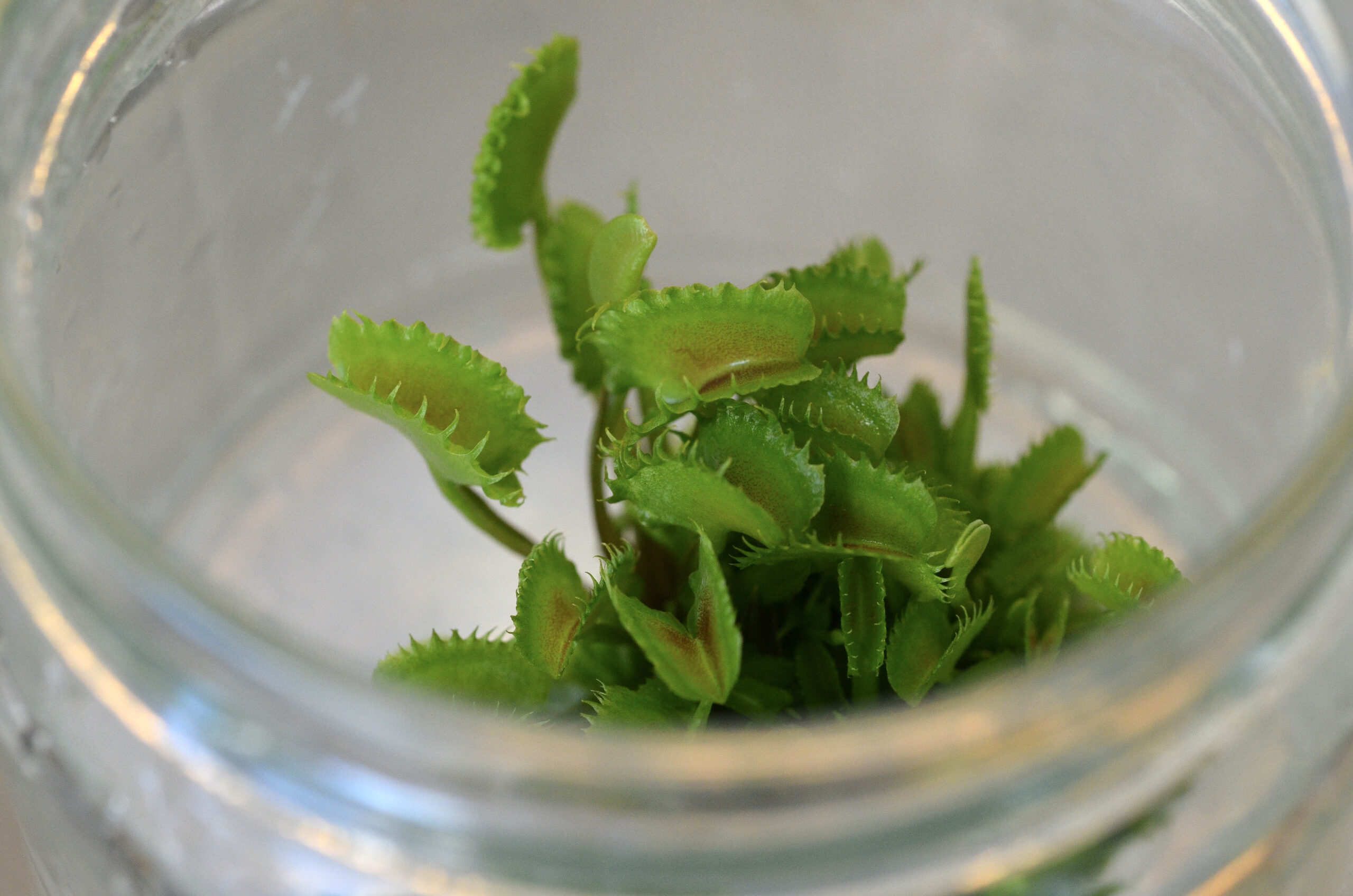
It’s precisely during this phase that the plant “matures,” transitioning from an “in vitro phenotype” to a “natural phenotype.” It produces new leaves that are more adapted to the outdoors and begins to show its distinctive traits. The Dionaea, which are initially quite colorless and difficult to distinguish in vitro (with some exceptions), start to develop their coloration (from green to deep red) and other unique characteristics, such as the shape of their traps, petioles, and teeth.
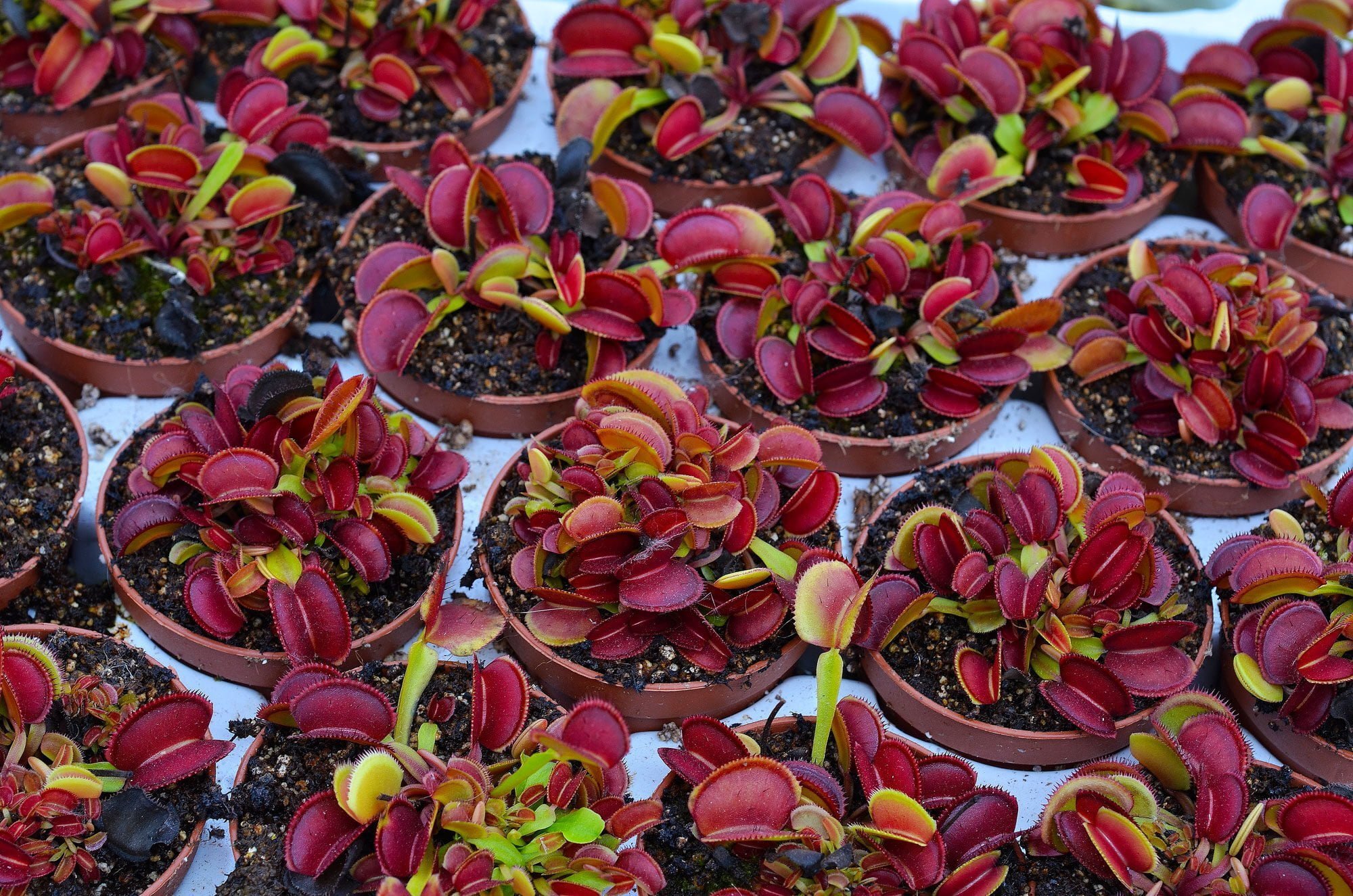
If the plant meets our desired aesthetic and vigor criteria, we move on to selection and commercialization. Generally, if multiple selections from the same seed batch show similar characteristics, we will only keep one variety.
The entire process, from pollination to commercial availability, takes more than 24 months.
It’s a labor of patience and dedication that allows us to present the public with unique Dionaea specimens—the result of focused research and a wealth of experience gained over the years.


